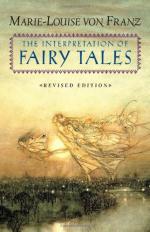|
This section contains 659 words (approx. 2 pages at 400 words per page) |

|
Chapter 1 Summary and Analysis
Fairy tales "are the purest and simplest expression of collective unconscious psychic processes" (p. 1). In contrast to mythologies and legends, which have a lot of cultural overlays, fairy tales have little in the way of cultural material, and thus are closer manifestations of human universal psychic processes.
The author borrows very heavily from Carl Jung and his hypothesis of the "collective unconscious" and the presence of "archetypes." The fairy tales is a "closed system"; that is, its meaning is contained in the tale itself, and not elsewhere. The fairy tale contains one essential psychological meaning" (p. 2), which it expresses with symbolic images and events. All fairy tales, furthermore, are just different versions of the same expression, the expression of the Self (with a capital S), another concept borrowed from Jung, which "is the psychic totality of the individual" (p. 2).
Author Von...
(read more from the Chapter 1 Summary)
|
This section contains 659 words (approx. 2 pages at 400 words per page) |

|




